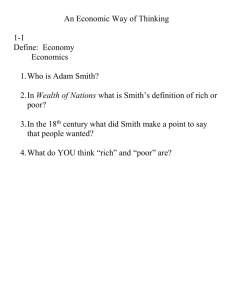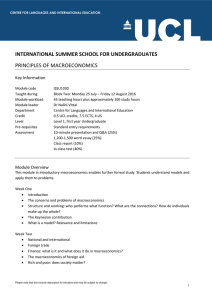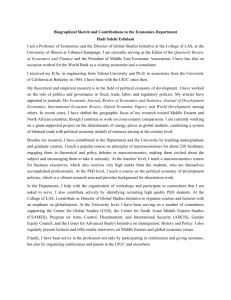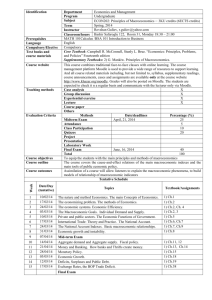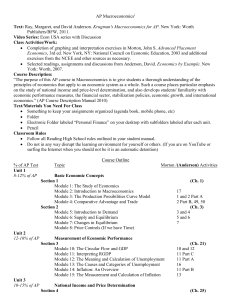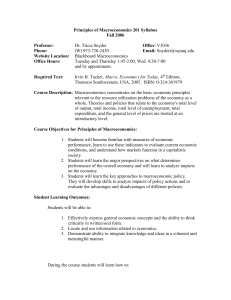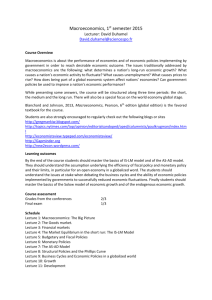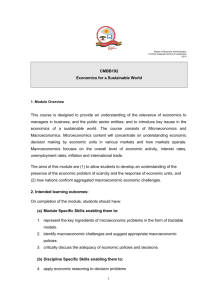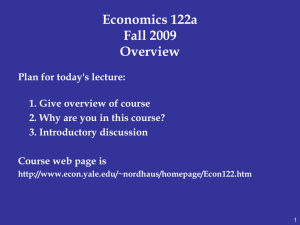Intensive Course in Economics: Foundations of Economic Policy
advertisement
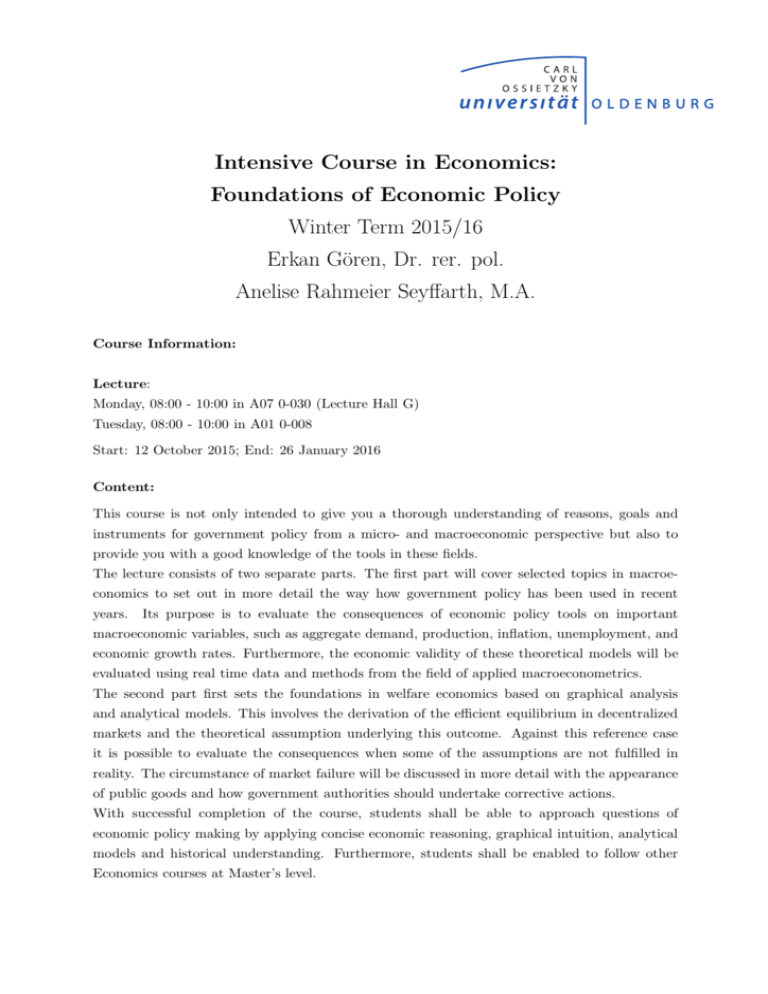
Intensive Course in Economics: Foundations of Economic Policy Winter Term 2015/16 Erkan Gören, Dr. rer. pol. Anelise Rahmeier Seyffarth, M.A. Course Information: Lecture: Monday, 08:00 - 10:00 in A07 0-030 (Lecture Hall G) Tuesday, 08:00 - 10:00 in A01 0-008 Start: 12 October 2015; End: 26 January 2016 Content: This course is not only intended to give you a thorough understanding of reasons, goals and instruments for government policy from a micro- and macroeconomic perspective but also to provide you with a good knowledge of the tools in these fields. The lecture consists of two separate parts. The first part will cover selected topics in macroeconomics to set out in more detail the way how government policy has been used in recent years. Its purpose is to evaluate the consequences of economic policy tools on important macroeconomic variables, such as aggregate demand, production, inflation, unemployment, and economic growth rates. Furthermore, the economic validity of these theoretical models will be evaluated using real time data and methods from the field of applied macroeconometrics. The second part first sets the foundations in welfare economics based on graphical analysis and analytical models. This involves the derivation of the efficient equilibrium in decentralized markets and the theoretical assumption underlying this outcome. Against this reference case it is possible to evaluate the consequences when some of the assumptions are not fulfilled in reality. The circumstance of market failure will be discussed in more detail with the appearance of public goods and how government authorities should undertake corrective actions. With successful completion of the course, students shall be able to approach questions of economic policy making by applying concise economic reasoning, graphical intuition, analytical models and historical understanding. Furthermore, students shall be enabled to follow other Economics courses at Master’s level. Intensive Course in Economics: Foundations of Economic Policy 2 Structure and Grade: The lecture will be held in block form. It starts with macro- followed by microeconomic contents. The lecture grade will be a 120-minute final exam. Additional information regarding time and location will be provided on Stud.IP. Literature: • Hindriks, Jean and Gareth Myles, Intermediate Public Economics, MIT Press, 2006. • Varian, Hal, ’Intermediate Microeconomics’, Norton & Company. (German translation: ’Grundzüge der Mikroökonomik’.) • Montiel, Peter, ’International Macroeconomics’, Wiley-Blackwell, 2009. • Carlin, Wendy and David Soskice, ’Macroeconomics: imperfections, institutions and policies’, 2006. • Dornbusch, Rüdiger and Stanley Fischer, ’Macroeconomics’, McGraw-Hill. (German translation: ’Makroökonomik’). • Barro, Robert J. and Xavier Sala-i-Martin, ’Economic Growth’, The MIT Press, 2004. • Felderer, Bernhard and Stefan Homburg, ’Macroeconomics and New Macroeconomics’, Springer-Verlag, 1987. (German translation: ’Makroökonomik und neue Makroökonomik’). • Sydsaeter, Knut and Peter Hammond, ’Essential Mathematics for Economic Analysis’, Pearson (German translation: ’Mathematik für Wirtschaftswissenschaftler’). • Additional documents, such as lecture slides, literature, etc. are available on Stud.IP.

